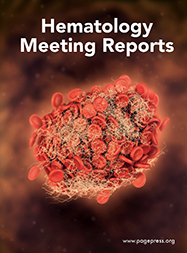Abstracts
3 June 2009
Vol. 1 No. 8 (2005)
0
0
0
0
 Smart Citations
Smart Citations0
0
0
0
Citing PublicationsSupportingMentioningContrasting
See how this article has been cited at scite.ai
scite shows how a scientific paper has been cited by providing the context of the citation, a classification describing whether it supports, mentions, or contrasts the cited claim, and a label indicating in which section the citation was made.
The developing role of clofarabine in acute leukemias
Supporting Agencies
How to Cite
The developing role of clofarabine in acute leukemias. (2009). Hematology Meeting Reports, 1(8). https://doi.org/10.4081/hmr.v1i8.300







